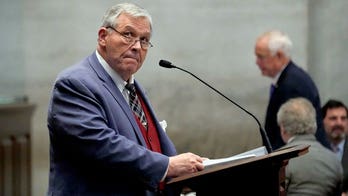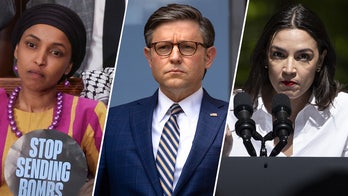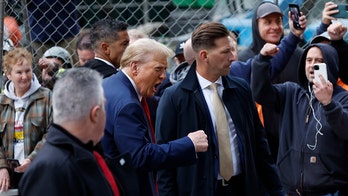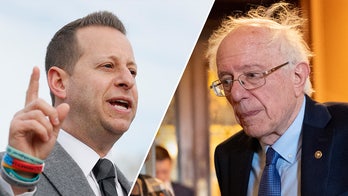
NORTH LAS VEGAS, NV - FEBRUARY 11: Actress America Ferrera talks to students at Rancho High School as she partners with Voto Latino to discuss the importance of young voters, including Latinos, participating in the civic process on February 11, 2016 in North Las Vegas, Nevada. Nevada's caucus for the Democratic presidential candidate is on February 20 and the Republicans caucus on February 23. (Photo by Ethan Miller/Getty Images) (2016 Getty Images)
In the first two presidential contests – Iowa and New Hampshire – there wasn’t much talk about young voters. But now that the focus of the Democratic presidential race has shifted to Nevada, the campaigns of Democratic hopefuls Hillary Clinton and Bernie Sanders have started scouring college campuses and hip neighborhoods around the Silver State in order to win over the this emerging segment of the population.
“We actually see kind of an interesting phenomenon among the Latino community in states like Nevada,” David Damore, a professor of political science at the University of Nevada, Las Vegas and a pollster with Latino Decisions, told Fox News Latino. “It’s the younger voters that engage their parents and grandparents to get them out to vote, as opposed to the traditional model of political socialization from the parents to grandparents down.”
Nevada marks the first contest in a swing state in which Latino voters – and in particular those under 30 – can make a significant difference in determining who wins the state’s delegates. Pew Research found that there are 328,000 Latinos eligible to vote in the caucus – or more than 17 percent of the state’s total electorate – and 45 percent of them are in the coveted millennial age group between 18 and 30.
Clinton, banking on her success with Latino voters in 2008 as well as the strong support of African-American voters, has touted her strength in Nevada and other states with large percentage of minority voters. In 2008, Latinos of all ages choose Clinton over Obama in the Democratic primaries,with 62 percent of Hispanics under the age of 29 voting for Clinton.
While one national survey found that the former Secretary of State is likely to get the same amount of support in the Hispanic community this time around, she faces a growing threat from Sanders when it comes to younger Latino voters.
“I feel like Bernie has definitely struck a chord among Dreamers and Latinos, and hopefully it does spread to the older communities,” said Angel Fernandez, an undocumented immigrant and Dreamer who volunteered with the Sanders’ campaign in order to recruit younger voters.
Dreamers like Fernandez hold considerable sway among young Hispanic voters, and both Clinton and Sanders have been vying for their endorsements. Clinton has made a particularly big effort to reach out to these activists as a way to counter Sanders’ growing support among millennials.
In her first public event in Nevada after she announced her candidacy in April, Clinton sat down with Dreamers at a North Las Vegas high school, and her campaign has been employing celebrity surrogates like “Ugly Betty” star America Ferrera and singer Demi Lovato to help win over undecided voters.
For his part, Sanders recently received the endorsement of Rep. Raúl M. Grijalva of Arizona and has built his own loyal following among Dreamers. Isaac Barron, a councilman in North Las Vegas and teacher at the school Clinton visited in April, said that while he has endorsed her, most of his students are backing Sanders.
"Most of them are Bernie kids. There's no doubt about it," he told the Los Angeles Times.
As both candidates race toward caucus day, one of the biggest issues facing both Clinton and Sanders is how many of these young Latino voters will actually show up to caucus.
The caucus format is a relatively new development in Nevada – introduced in 2008 when the state was moved up on the schedule to one of the first four states – and many people are unfamiliar with what goes on.
“The caucus is very new to Nevada, and a lot of people are unfamiliar with the process and especially in the Latino community,” Vanessa Valdiva, a field organizer with Hillary for America, told FNL. And younger Latinos are less likely to vote in general than their older counterparts are.
The Pew Research Center found that in 2012 only 38 percent of registered Latino millennials actually went to the poll, compared to 55 percent of older Latinos. Younger Latinos also lagged behind their peers – 48 percent of white millennials and 55 percent of African-American millennials voted in 2012.
This concern has volunteers from both campaigns hitting the pavement in an attempt to drum up support and get people to caucus sites.




